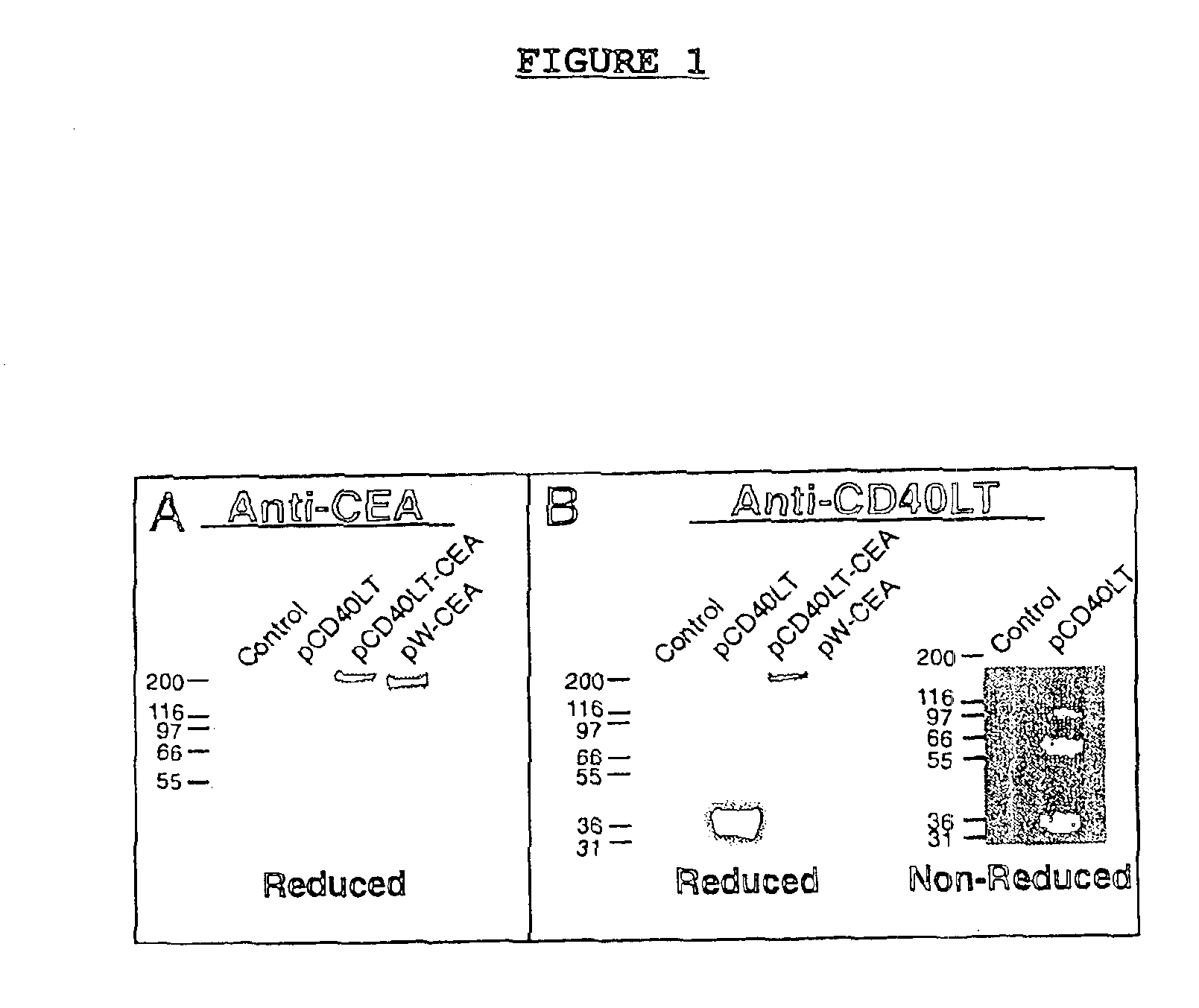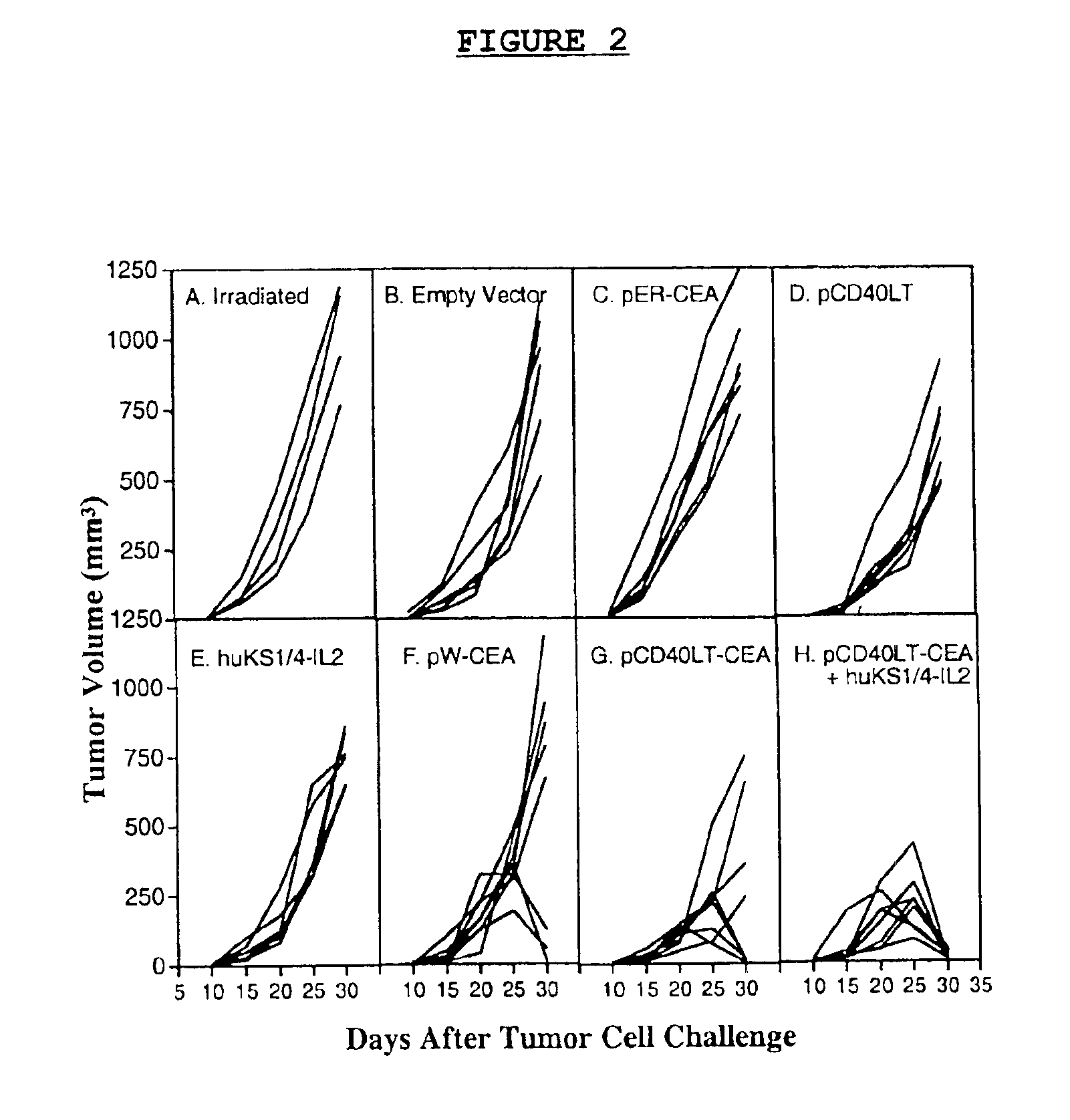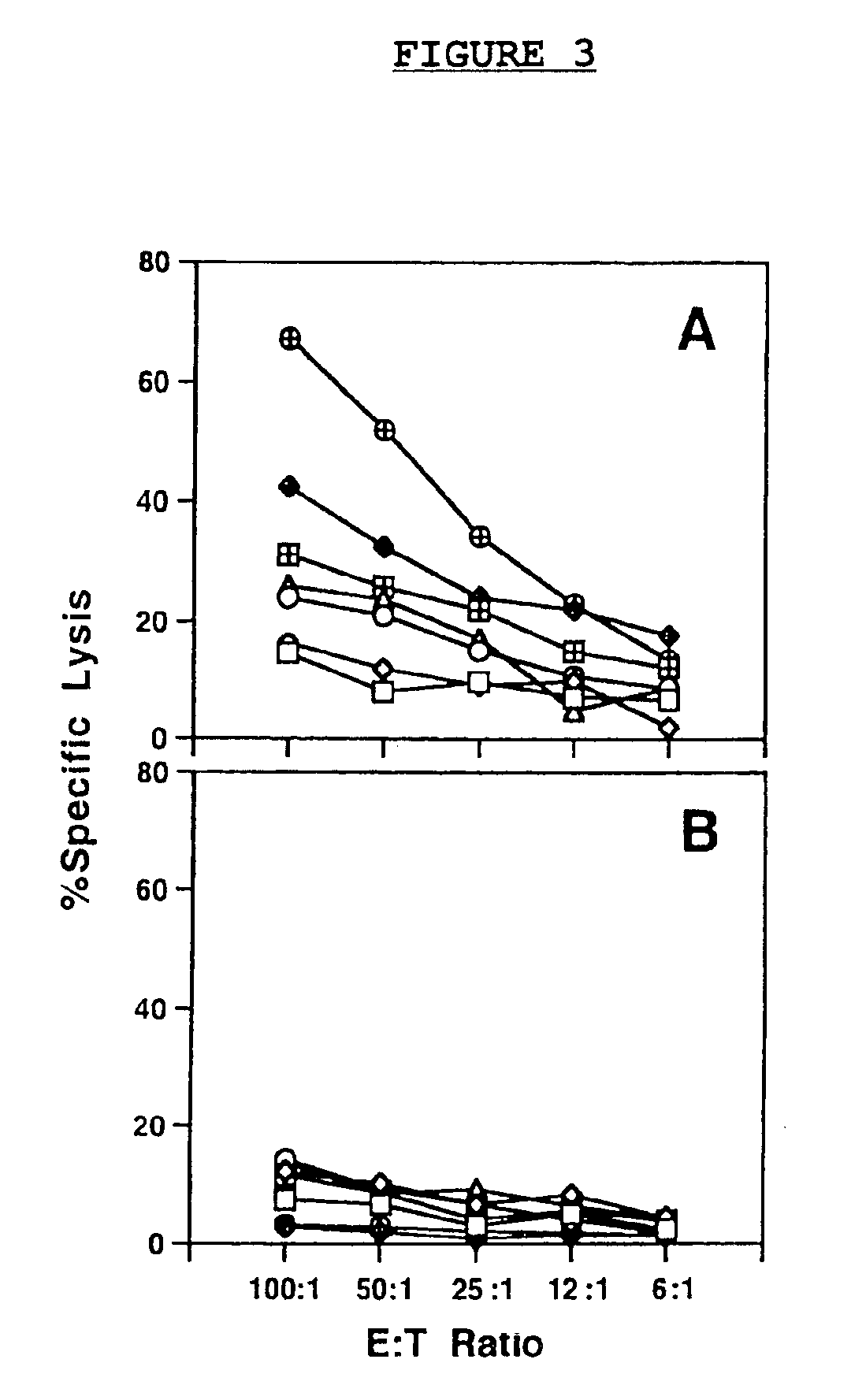DNA vaccines encoding CEA and a CD40 ligand and methods of use thereof
a technology of dna vaccine and cd40, which is applied in the field of dna vaccine encoding cea and cd40 ligand, can solve the problems of inactivation and not all infectious agents can be readily cultured, and achieve the effect of enhancing the effective immune response and enhancing the immune response of the mammal treated
- Summary
- Abstract
- Description
- Claims
- Application Information
AI Technical Summary
Benefits of technology
Problems solved by technology
Method used
Image
Examples
example 1
Protein Expression of CEA and CD40LT
[0082]Protein expression of plasmids pCD40LT, pCEA-CD40LT and pW-CEA were analyzed by transfection into COS-7 cells. Western blotting indicated that all constructs produced proteins of the expected molecular mass (35 kDa, 215 kDa, and 180 kDa, respectively) as shown by SDS / PAGE analyses of lysates from transfected cells, analyzed under reducing conditions (FIGS. 1A and 1B). A plasmid encoding pCD40LT expressed proteins in the cell lysate indicative of monomeric, dimeric and trimeric CD40L, under non-reducing conditions (FIG. 1B). CD40L protein was also detected in supernatants of transfected cells under reducing conditions (FIG. 1A).
example 2
Induction of Tumor Protective Immunity by a Dual-Function Vaccine Encoding both CD40LT and CEA Molecules
[0083]A number of experiments were performed, including several controls, which indicated that the dual-function DNA vaccine (pCEA-CD40LT) targets CD40LT and CEA to DCs and T cells, respectively. The results are graphically depicted in FIG. 2. In FIG. 2, the tumor growth of each individual mouse is depicted by a solid line. Thus, C57B1 / 6J mice transgenic for CEA were immunized on days 0 and 7 each by subcutaneous injections of 2.5×105 irradiated (15,000 rad) MC38 murine colon carcinoma cells. Challenge of these controls two weeks later with a lethal subcutaneous dose of MC38-CEA-KSA cells resulted in rapidly developing tumors in all mice indicating that MC38-CEA-KSA cells were not immunogenic per se (FIG. 2A). This was also found to be the case in three other key control experiments: Mice (n=6) vaccinated three times at two week intervals by oral gavage with 1×108 attenuated S. ty...
example 3
Vaccination Efficacy is Amplified by Boosts and Antibody-IL2 Fusion Protein
[0084]Boosts with small, non-curative doses of huKS1 / 4-IL2 fusion protein targeted to the tumor microenvironment markedly increased the efficacy of the inventive DNA vaccine. In fact, vaccination of CEA-transgenic mice by the same protocol described for the pCEA-CD40LT vaccine group, followed by intravenous injections of 5 μg huKS1 / 4-IL2 one day after tumor cell challenge for five consecutive days, resulted in the complete rejection of the tumor cell challenge in 8 / 8 experimental animals (FIG. 2H). An important control experiment indicated that the injection of 5×5 μg of huKS1 / 4-IL2 fusion protein per se had essentially no effect on tumor growth, when administered to naive mice that only had received the tumor challenge without prior immunization by the inventive DNA vaccine (FIG. 2E). The IL2 fusion protein boost was specific, since boosting with a non-specific fusion protein hu14.18-IL2 directed against gan...
PUM
| Property | Measurement | Unit |
|---|---|---|
| concentration | aaaaa | aaaaa |
| molecular mass | aaaaa | aaaaa |
| molecular mass | aaaaa | aaaaa |
Abstract
Description
Claims
Application Information
 Login to View More
Login to View More - R&D
- Intellectual Property
- Life Sciences
- Materials
- Tech Scout
- Unparalleled Data Quality
- Higher Quality Content
- 60% Fewer Hallucinations
Browse by: Latest US Patents, China's latest patents, Technical Efficacy Thesaurus, Application Domain, Technology Topic, Popular Technical Reports.
© 2025 PatSnap. All rights reserved.Legal|Privacy policy|Modern Slavery Act Transparency Statement|Sitemap|About US| Contact US: help@patsnap.com



